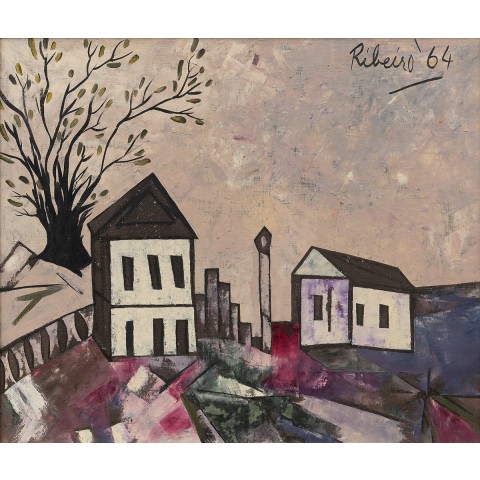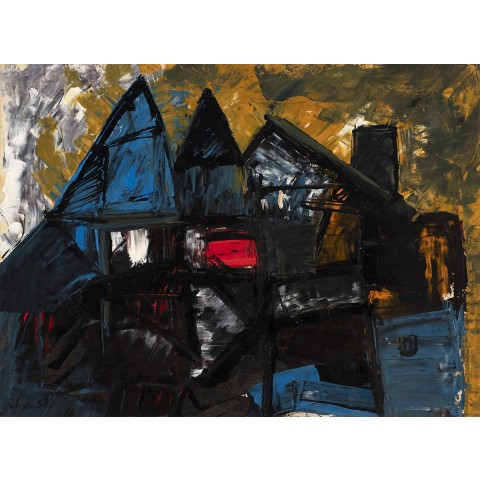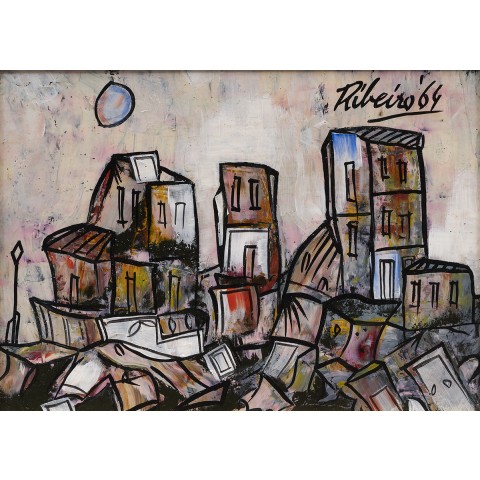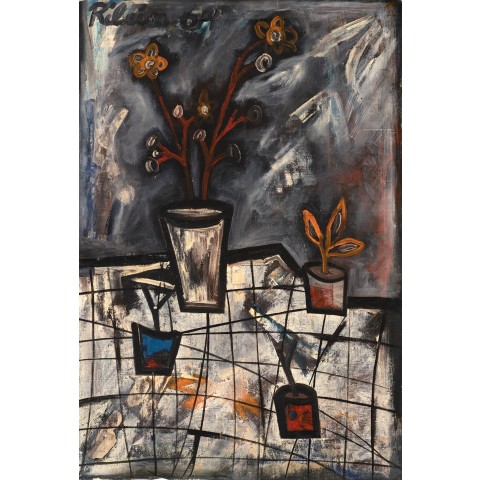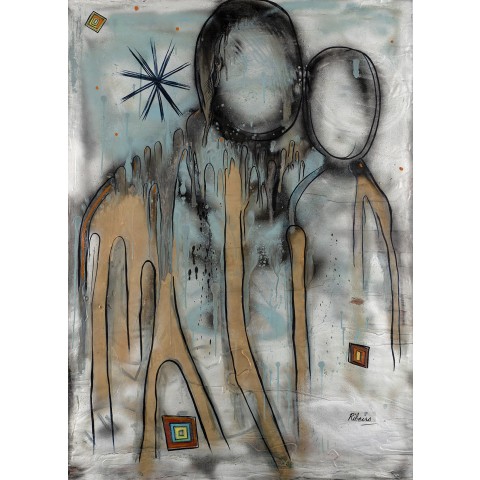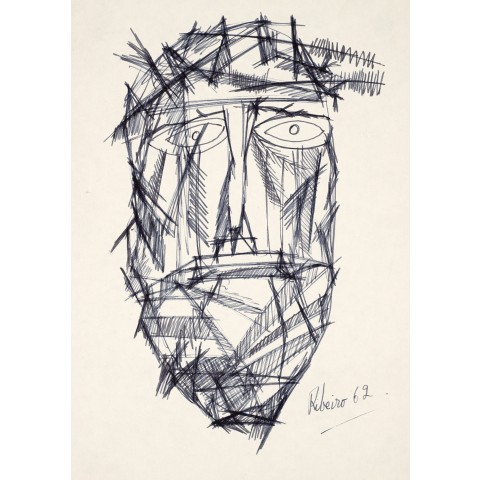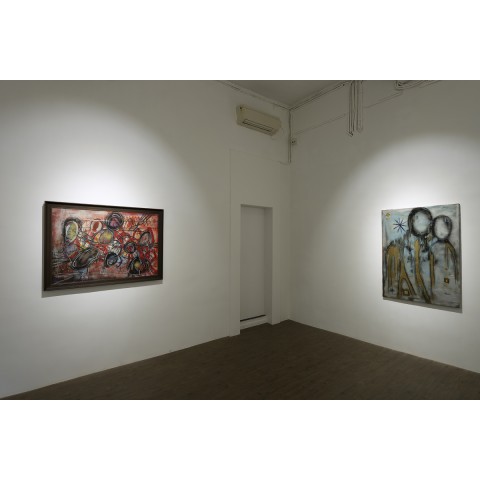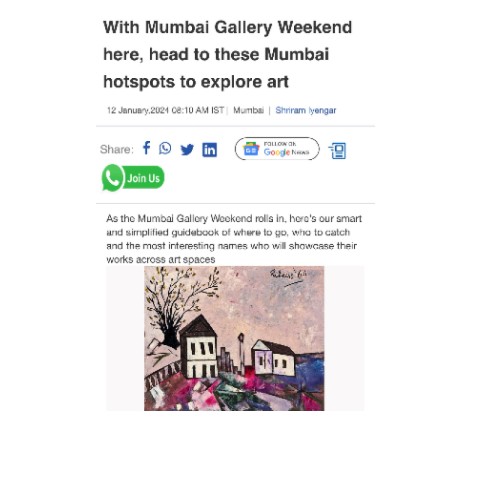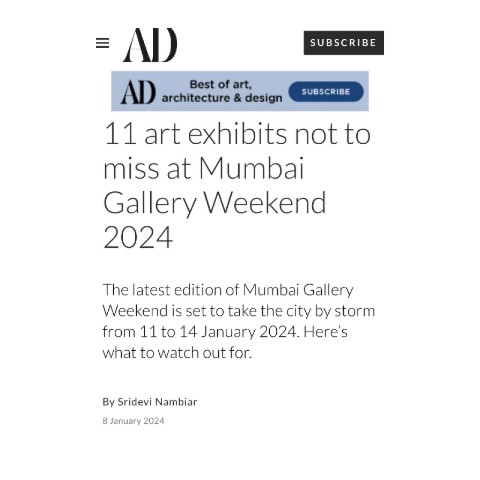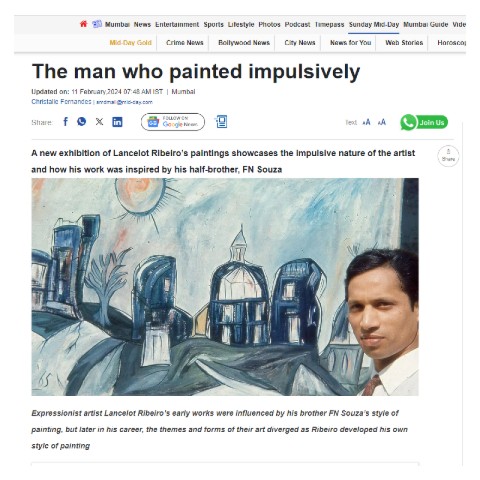
IMPULSIVE, COMPULSIVE: THE ART OF LANCELOT RIBEIRO
January 11 - March 02 , 2024
Lancelot Ribeiro was a prolific artist who experimented with
a diverse range of styles and mediums over the course of his career. The
present exhibition gives a taste of both his longevity and the breadth of his
creativity, featuring one oil from the late 1950s, a number of drawings and paintings
from his heyday in the 1960s, a series of small format watercolours from the
1980s, and larger semi-abstract pieces from the 1990s which involve collage.
Born in colonial Bombay in 1933, Ribeiro moved to London in
his late teens and returned to India for a few years before settling down for
good in England in the 1960s. He established a reputation in both nations
through a series of successful solo displays. Although he never replicated those
early triumphs, he continued to exhibit regularly and found new opportunities
in continental Europe later in his career. Following his death in 2010, his
daughter Marsha has spearheaded a
successful effort to bring renewed focus on his achievements, cementing
his place in the history of Indian and British Asian art.
No analysis of Ribeiro’s work would be complete without
mention of F.N. Souza, his elder half-brother whose influence is apparent even
in drawings dating from Ribeiro’s schooldays. Ribeiro’s townscapes, heads and
still lifes of the 1960s all bear Souza’s imprint in choice of subject as well
as some aspects of form. However, the younger half-brother quickly developed
his own distinct voice, one less acerbic than Souza’s and more inclined to
undulating lines, unusual colour combinations and abstraction. He was in the
forefront of experiments with alternatives to oils like Polyvinyl Acetate, a
quick drying medium that facilitated rapidity of execution.
The mood of his 60s landscapes varies from calm to ominous,
as does the tenor of his later work. The ‘compositional townscapes’ seem airy
and optimistic while the collages of the following decade are brooding and
intense. The pictures dating from the 1990s combine aspects of landscape, still
life, figure depiction and abstraction within gestural, expressionist mixed
media works which demonstrate how Ribeiro never lost his zest for striking out
in new directions.
